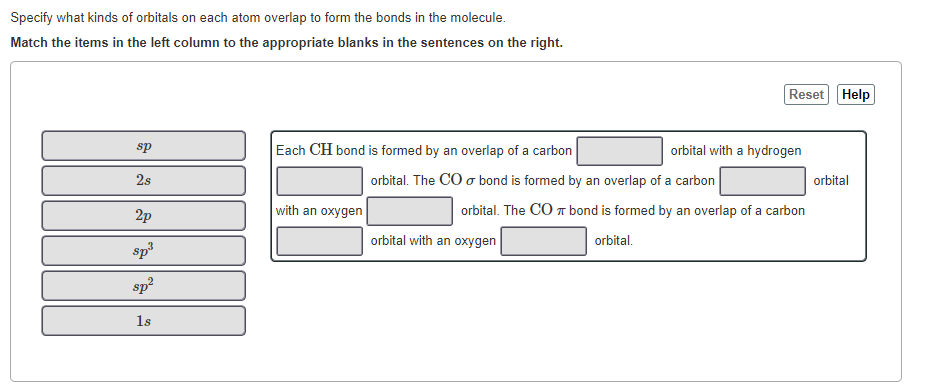

Let’s follow these guidelines and generate a molecular orbital electron configuration diagram for Li 2 (Figure 9.21 “Molecular orbital electron configuration energy diagram for dilithium”): Figure 9.21 “Molecular orbital electron configuration energy diagram for dilithium.” Increased overlap lowers the energy of the bonding molecular orbital further, and raises the energy of the antibonding molecular orbital. The effectiveness of atomic orbital combination depends on the amount of orbital overlap.Combined atomic orbitals should be of similar energy levels.The number of MOs generated is equal to the number of atomic orbitals combined.Generating molecular orbitals of molecules more complex than hydrogen using the LCAO method requires following a few additional guidelines: Therefore there is a single bond in the hydrogen molecule. A value of zero means that there is no bond present, and the atoms exist separately.ĭetermine the bond order of the hydrogen molecule. These values correspond to the valence bond model, so a bond order of 1 is equal to a single bond, and 2 is equal to a double bond. We can evaluate the strength of a covalent bond by determining its bond order.īond-order values can be whole numbers, fractions, or zero. We have just seen that the bonding molecular orbital is lower energy and promotes the formation of a covalent bond, while the antibonding molecular orbital is higher energy with a node of zero electron density between the atoms that destabilizes the formation of a covalent bond. Figure 9.20 “Hydrogen molecular orbital electron configuration energy diagram.” Bond Order The bonding molecular orbital is filled and is relatively lower in energy than the contributing atomic orbitals, supporting the fact that hydrogen molecules (H 2) are more stable than lone hydrogen atoms. Notice that the atomic orbitals of each atom are written on either side, and the newly formed molecular orbitals are written in the centre of the diagram. Similar to atomic orbitals, we can write electron configuration energy diagrams for molecular orbitals (Figure 9.20 “Hydrogen molecular orbital electron configuration energy diagram”). Figure 9.19 “Hydrogen molecular orbital combination diagram.” This node of zero electron density is destabilizing toward the bond, making it higher energy, and subsequently this type of orbital is known as an antibonding molecular orbital (denoted by the asterisk in the orbital name). This type of combination results in an area of zero electron density between the two nuclei, known as a nodal plane (or node). The σ* 1 s orbital is generated by a destructive combination (or interference), where the wave functions of the two atomic orbitals cancel each other. These electrons are stabilized by attractions to both nuclei, and they hold the atoms together with a covalent bond. Notice in Figure 9.19 “Hydrogen molecular orbital combination diagram” that the electron density of this orbital is concentrated between the two nuclei. This is the lower energy of the two molecular orbitals and is known as the bonding molecular orbital. The σ 1 s orbital is generated by a constructive combination (or interference), where the two atomic orbitals wave functions reinforce (add to) each other. The Molecular Orbitals of the Hydrogen MoleculeĬombining the 1 s orbitals of each hydrogen atom using LCAO, two molecular orbitals are generated σ 1 s (pronounced sigma one s) and σ* 1 s (pronounced sigma star one s). Molecular orbitals are associated with the entire molecule, meaning the electron density is delocalized (spread out) over more than one atom. The major difference between atomic and molecular orbitals is that atomic orbitals represent electron density in space associated with a particular atom. They can hold a maximum of two electrons of opposite spin per orbital (Pauli exclusion principle).They are filled from lowest energy to highest energy (Aufbau principle).Molecular orbitals share many similarities with atomic orbitals: MO theory takes the idea of atomic orbitals overlapping to a new level, where new molecular orbitals are generated using a mathematical process called linear combination of atomic orbitals (LCAO). Molecular orbital theory is a more sophisticated model for understanding the nature of chemical bonding. To complement this theory, we use another called the molecular orbital (MO) theory. Valence bond theory is able to explain many aspects of bonding, but not all. Learn to draw molecular orbital electron configuration energy diagrams.Gain an understanding of molecular orbital theory.


 0 kommentar(er)
0 kommentar(er)
